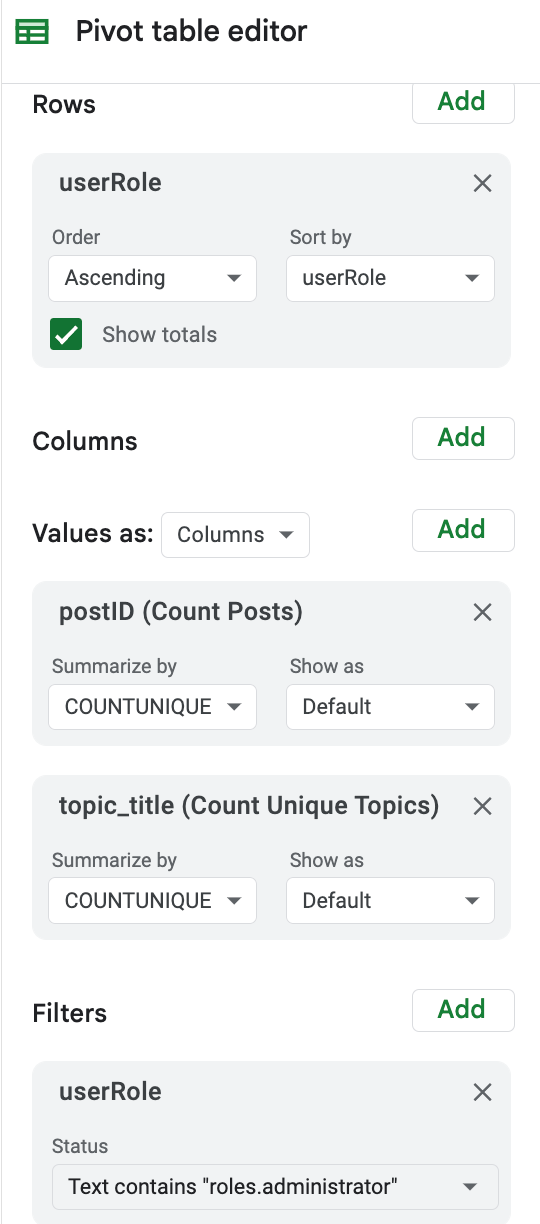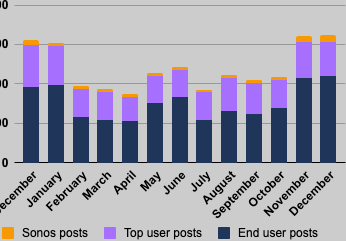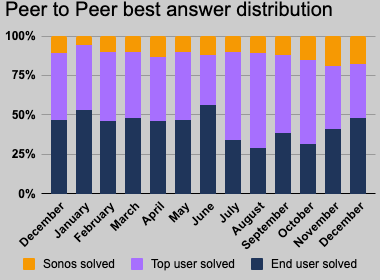Hi there, one of the main goals of our support community is to grow peer support i.e. to make sure our customers help each other out and answer each other’s questions.
We measure our success there by calculating a monthly “answered by peer rate”
(Sum of all Questions answered by customers) divided by (Sum of all Questions answered)
The only problem with that is that this only tells us part of the picture about how helpful our members are, because the “Best Answer” works on a “winner-takes-it-all-principle”. Click on “learn more” to see what i mean.
E.g. imagine the following scenario:
A user asks a question. 5 different users come to help with their solution, which is fantastic.
Then our own moderator writes a comment that sums up or validates the other replies. This comment gets selected as “best answer”.
Result: this thread, even if our user base was extremely helpful, has a negative effect on our “answered by peer rate”. but this should not be the case.
So I would like to also consider an additional metric to show us a more complete picture.
I would like to know:
The amount (or % ) of topics in which a fellow user commented on the topic,
(a dialogue between OP and Moderator would not count).
Or, basically % of topics in which a certain custom role added a comment (or a certain primary role did not comment)
Does anybody have an idea how to calculate that? Any clever workarounds?
“Single User Topics” does not help, because it only shows “monologues”
Thank you so much in advance!
Cheers,
Daniele







